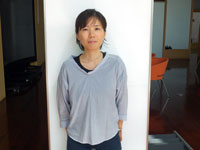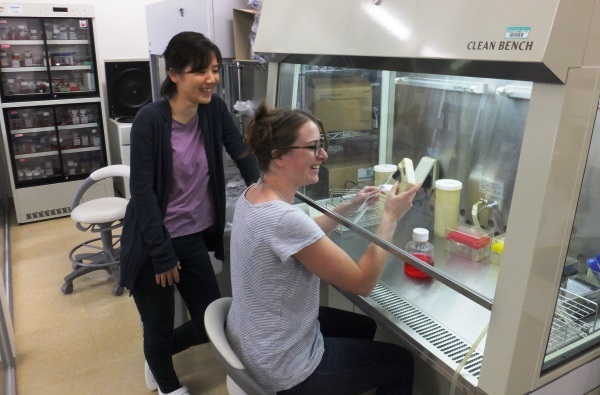Dec. 28, 2017
Engineering life
Miki Ebisuya, Unit Leader

Cell Dynamics Research Core, RIKEN Quantitative Biology Center
Please describe your role at RIKEN.
I lead and manage my laboratory, where we are seeking to reconstruct the basic developmental mechanisms of multicellular organisms.
Please briefly describe your current research. Why is it important?
My research is filed under synthetic biology—a young field, born in about 2000, that attempts to apply engineering principles to the design and construction of complex biological systems. But while most synthetic biologists use single-cell organisms such as E. coli, my research focuses on multicellular developmental mechanisms and so I call it synthetic developmental biology. By artificially recreating developmental processes, we’re trying to better understand how our body is built. So far, my lab has reconstituted a mechanism for spontaneous cell differentiation—the diversification of cell types—by constructing a synthetic gene circuit that makes neighboring cells communicate with each other in a cell culture. We are now working on reconstructing the mechanisms for pattern formation and tissue deformation, both of which are fundamental to animal development.
What excites you the most about your current research?
Current knowledge and technology are still too immature to make or reconstitute biological phenomena at will. In fact, most of the reconstitution projects we’ve planned so far have yet to be realized. While this is frustrating, I feel that there are unlimited possibilities and enormous potential in this area.
How did you become interested in the field?
I’ve liked building things since I was a young child—my favorite toy used to be LEGO. I also like living creatures and used to observe insects in the garden for hours. So I figured that building biological phenomena was for me.
When and how did you join RIKEN?
As an undergraduate, I visited and greatly admired the RIKEN Center for Developmental Biology (CDB) and was very happy when I got a unit leader position in 2013 (in 2014, my lab moved to the RIKEN Quantitative Biology Center, QBiC).
What are some of the technologies that you use for your research?
RIKEN’s Kobe campus has some state-of-the-art technologies, including an animal facility, an imaging facility and a genome analysis facility. We often consult with the staff of these facilities about experimental problems.

What made you decide to become a scientist?
As a child, I thought that becoming a scientist and figuring out the secrets of this world was incredibly romantic. Then, as an undergraduate, I started to like the process of research itself—from making a hypothesis and planning an experiment, to carefully carrying out the experiment, admitting failures, revising hypotheses, repeating trials, and, once in a long while, discovering something new!
How has being at RIKEN helped your research?
Since my laboratory is affiliated with QBiC and located in the same building as the CDB, I have had the opportunity to learn advanced imaging and engineering at QBiC, as well as about animal development at the CDB.
Please tell us about your professional and personal goals.
I want to make artificially created biological phenomena seem as beautiful as other natural phenomena and to discover a new biological principle through synthetic reconstitution.
